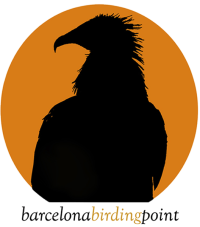Swift Poland Birding Tour 2023
Dates: June 5th to 10th, 2023
Number of participants: 8
Number of species: 131
Tour leader: Carles Oliver
Overview: We are really happy to present you another successful 1st issue in another key birding destination. Our first tour in Poland produced excellent sights in a very good list of specialties living in the amazing forest of Bialowieza and nearby areas. Despite the rather high temperatures, all tour participants enjoyed great views on Pygmy Owl, Aquatic & River Warblers; Three-toed, White-backed & Black Woodpeckers; Collared & Red-breasted Flycatchers and many other key species.
Day 1. The whole group assembled at Warsaw International Airport after arriving from different flights coming from the UK. Once the vehicle was collected and the Warsaw traffic negotiated we had a first stop in a lovely swamp midway between the Polish capital city and our accommodation.
It was very sunny and warm but still plenty of activity. Even before parking we had a first good bird, since a splendid Black Stork was soaring low over the marshes. A short walk around produced several Sedge Warblers and Common Reed Buntings but also the best views on Common Rosefinch of the trip: a lovely male singing only a few metres away from our group. The Aspens around were having Penduline Tits, and we were soon enjoying views on the male as it was moving in the reedbeds. A minimum of 2 Thrush Nightingales were singing around, but we never saw them.
In a nearby forest we had at least 4 Icterine Warblers, even if not everybody in group had them this time. Lesser Whitethroat and Garden Warbler were also noted.
From here we had some drive to our accommodation, with a pair of Golden Orioles and Common Cuckoos flying by the minibus as we were crossing the lovely landscapes in Eastern Poland.



Day 2. Short pre-breakfast walk to enjoy some birds in our hotel grounds. First views on Black Redstart of the trip along with common beauties including Golden Oriole and Lesser Whitethroat before covering the short distance to Bialowieza.
Our first walk in the impressive forests around Bialowieza could not be more productive. Despite the heat, a walk in the forestry was fast in producing the first Collared Flycatcher and Lesser Spotted Eagle of the trip. Hawfinches were all around calling and flying, but always difficult to catch. Both Marsh & Willow Tits were seen before we followed a Red-breasted Flycatcher that was singing inside the forest. We walked 200 metres away from the path, and soon we were surrounded by some impressive 300 years old trees. A Red-breasted Flycatcher was singing really close, and after some search we were all soon enjoying great views on this bird. But right before the Flycatcher showed out, a White-backed Woodpecker called once low around our group, and only a few minutes after the Flycatcher we had good views on two White-backed’s that were calling, drumming and feeding in the canopy around us!
Back to the minibus, we had our packed lunch while enjoying more views on a gorgeous male Collared Flycatcher before moving on to our next stop.




Eurasian Pygmy Owls have become quite common around Bialowieza, but they keep being difficult to spot. This time we were lucky, and at the moment of arrival the female was out of the nest, calling. Its calls were being answered by the male nearby in the trees, and after some waiting we saw the female leaving the nest, and joining the male in branch. The male was waiting for her with some food, and he fed her before she went back to its nest. This feeding scene didn’t go unnoticed by the several tits and goldcrests around, and they all tried, unsuccessfully, to disturb the pair of tiny owls.
We could hardly believe our luck. To arrive at the nesting place just in time for one of this feeding ceremonies is quite difficult, but our luck was not over. After feeding, the female took her time in cleaning the nest hole, removing material from former preys out the whole to prevent infections. Time to time, male and female were still calling each other! After almost one hour of sighting we left the place, fully satisfied with the quality of the slight and the impressive details on the behaviour of this enigmatic species.



After dinner, we drove until one of the leks of Great Snipes around Bialowieza. It was the evening, a wonderful time to enjoy the bojs. A gorgeous chorus of birds was waiting for us in the place. There were Common Reed Buntings and Segde Warblers but also River & Grasshopper Warblers as well as distant Thrush Nightingale plus Marsh & Icterine Warblers. The sunset was arriving, but before we still had time to see the only one Great Grey Shrike of the trip as well as passing Eurasian Woodcocks and a hunting Short-eared Owl. But the Great Snipes were not playing the game. We gave them a long time but only a male was singing time to time, and only offered a short flight that was only a few in the group could enjoy.
Day 3. Some in the group enjoyed a pre-breakfast walk around our accommodation, resulting in great looks into River Warbler and Thrush Nightingales. After breakfast, we kept our exploration of the forests. Our first stop produced lovely views on Wood Warblers (surprisingly nesting in spruce forests!), Crested Tits, flocks of Common Crossbills and a rather unexpected European Adder in the path.
The heat was already noticeable when we arrived to a small patch of spruce. There, a nest of Eurasian Three-toed Woodpecker was waiting for us. Only a short wait was necessary before one of the adults came to the next, and during the next half and hour we all enjoyed again with the intimate views of the pair of this rather small woodpecker while coming to feed their young and marking the territory around the hole.
For over 45 minutes, we enjoyed amazing views on the pair of Three-toed’s while they were getting in and out the whole and interacting in the trees around. The forest around was full of birds, and here we got Tree Pipits, Willow Tits but also the only Eurasian Siskins of the trip. In the distance, a Black Woodpecker was calling over and over. It was definately time to move away. We took advantage of the calling Black Woodpecker and after a short scanning we had the bird moving in patch of Scotch Pines before we had a magnificent view of the bird flying across the road before stopping a few seconds in a tree nearby.
By midday we went to a lake nearby. Here we had the first views on a number of species including Marsh & Great Reed Warbler but also Black, Common and small numbers of White-winged Black Terns. Several Mute Swans were feeding, and a pair of Whooper Swan was also a nice adding to our list. White-tailed Eagles were flying around along with several White & Black Storks, Marsh Harriers, some distant Leasser Spotted Eagles and the only one Caspian Gull of the trip. Other interesting species here included European Stonechats and Red-backed Shrikes while Savi’s Warbler, Greater Bittern and Corncrake were all listened.

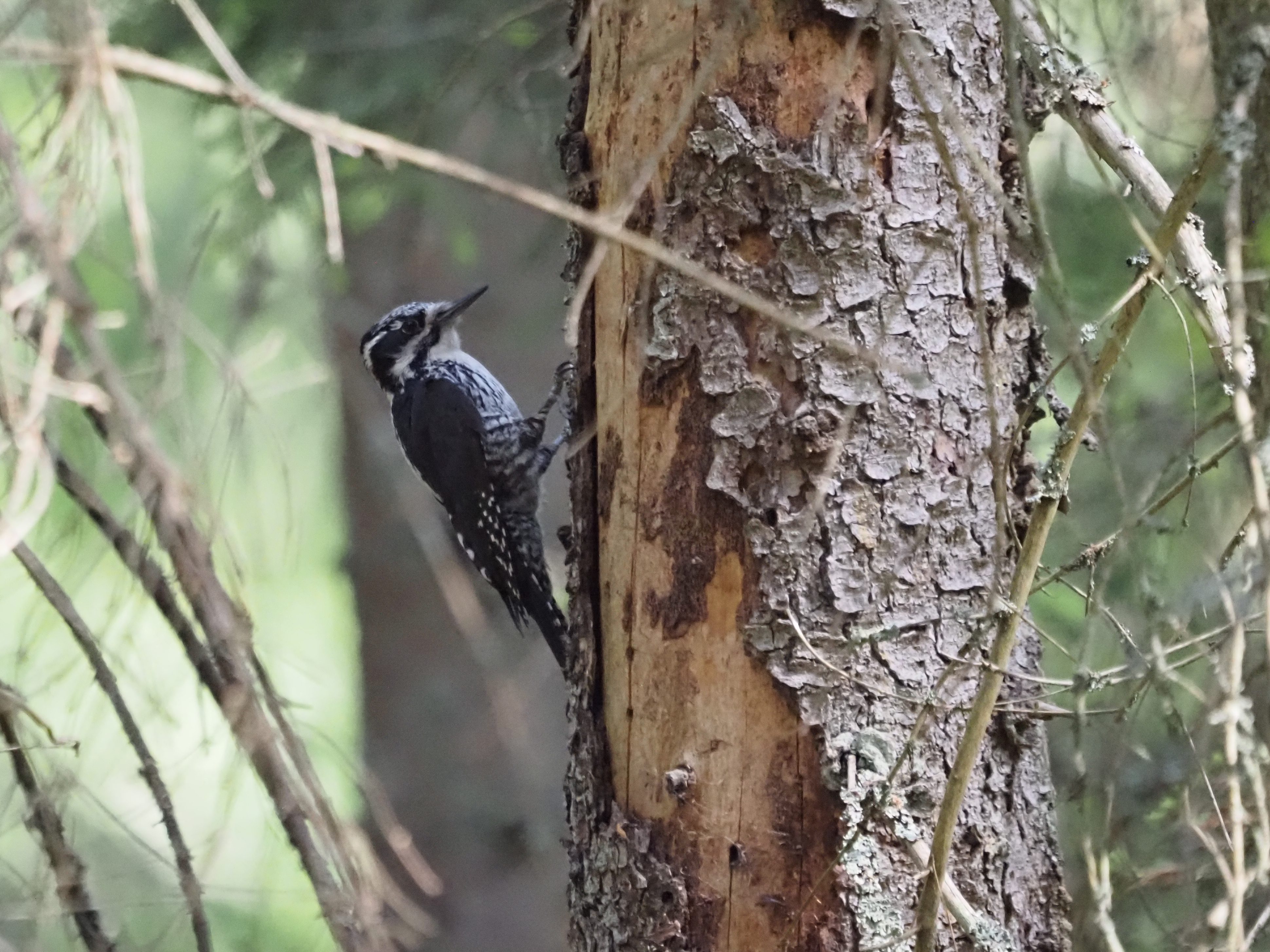

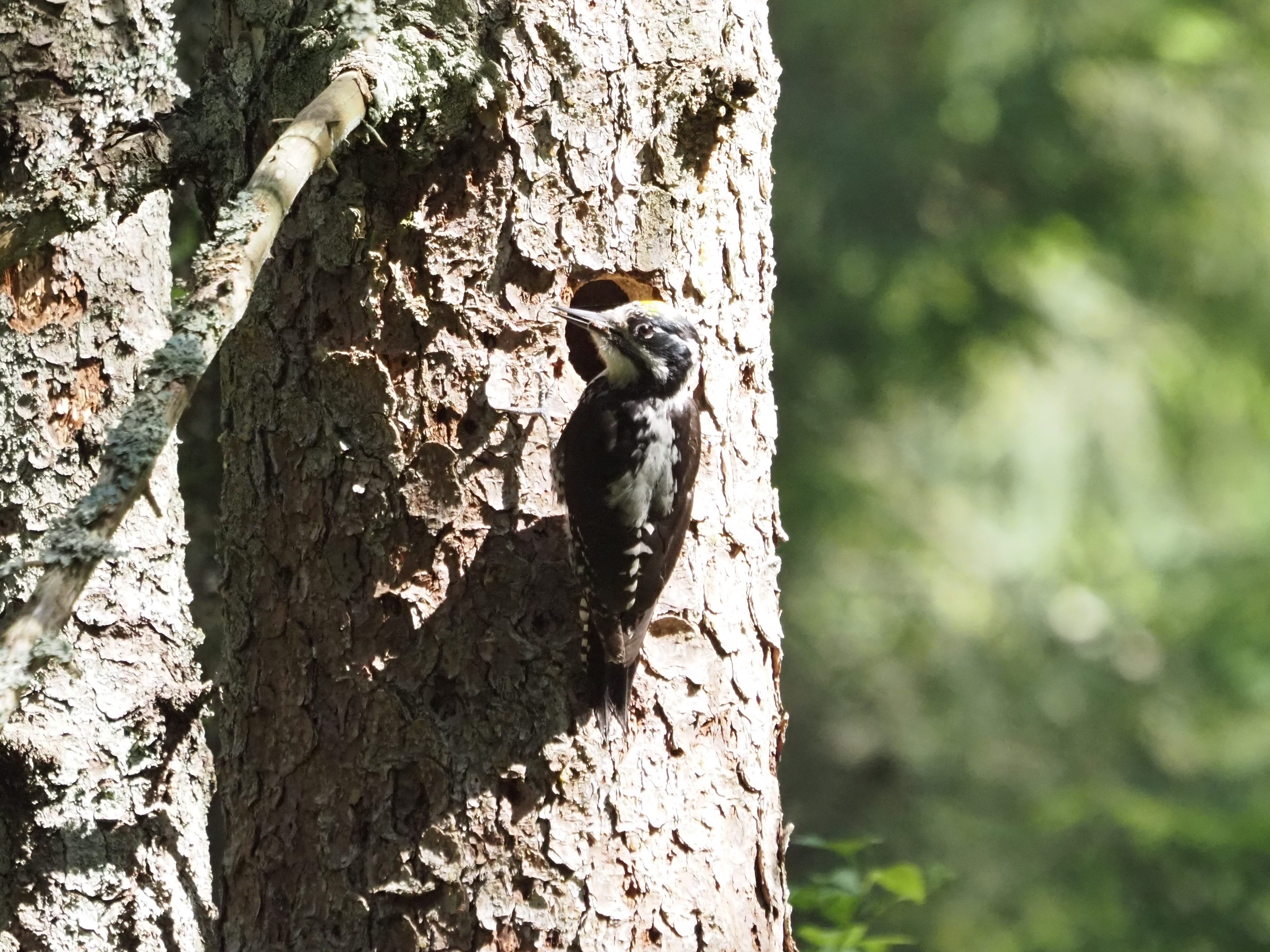
The temperature was high and bird activity not massive, but there were some very promising clouds in the sky.. Our next stop was devoted to explore a small park around Bialowieza. Here we had some very elusive Icterine Warblers, Collared Flycatcher and at least 2 Middle Spotted Woodpeckers.
The marshes around were a paradise for warblers, and soon we had excellent views on a wonderful Barred Warbler moving in the small trees along the walk. Marsh, Reed & Grasshopper Warblers were also noted in the area.
Our last stop of the day was in a nother small corner of marsh. Here there was an impressive density of Sedge Warblers, but also good numbers of Marsh Warblers and we all could enjoy good but short views on River Warbler. Before going back to our accommodation, a European Green Woodpecker was noted nearby.

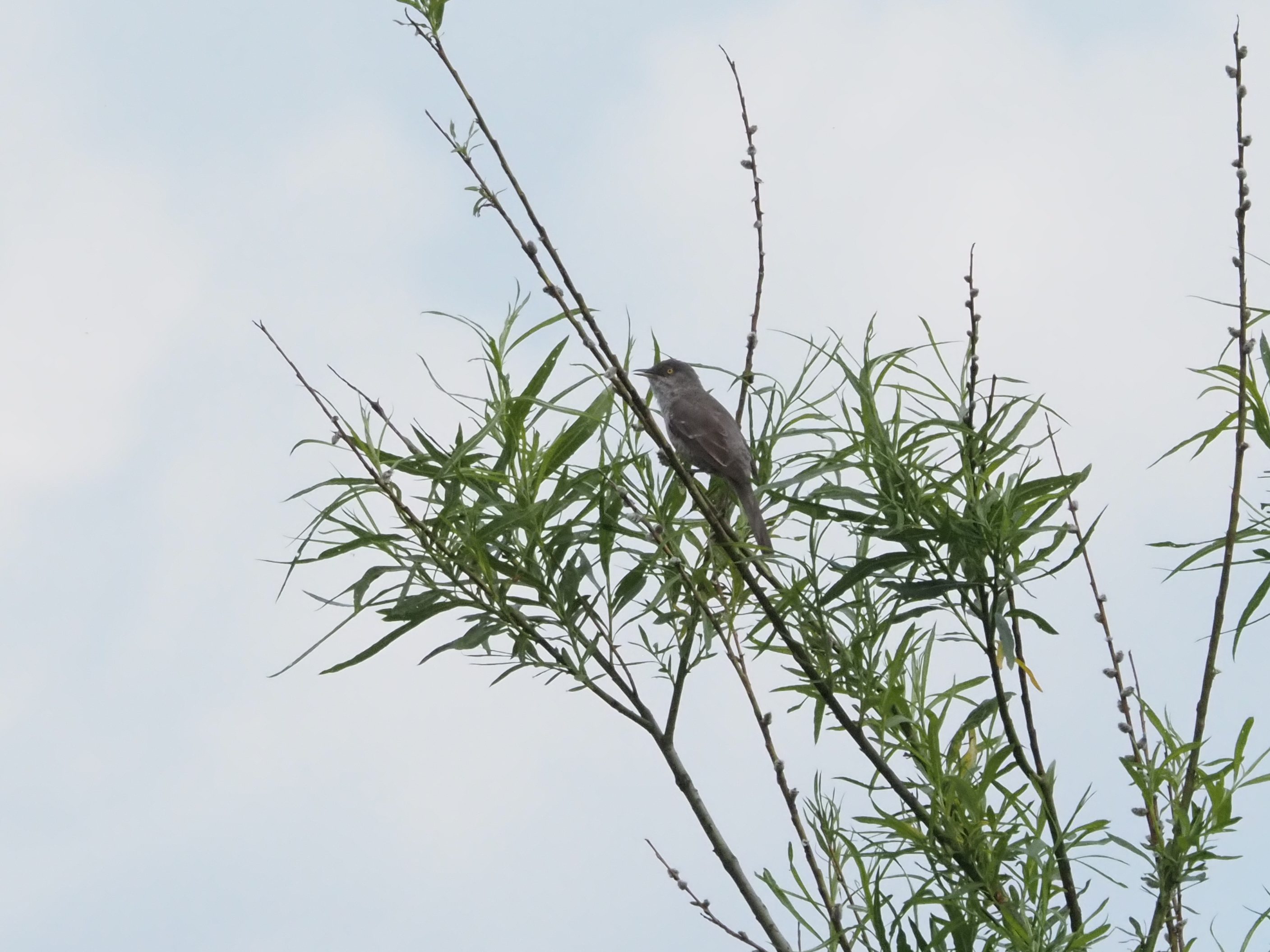


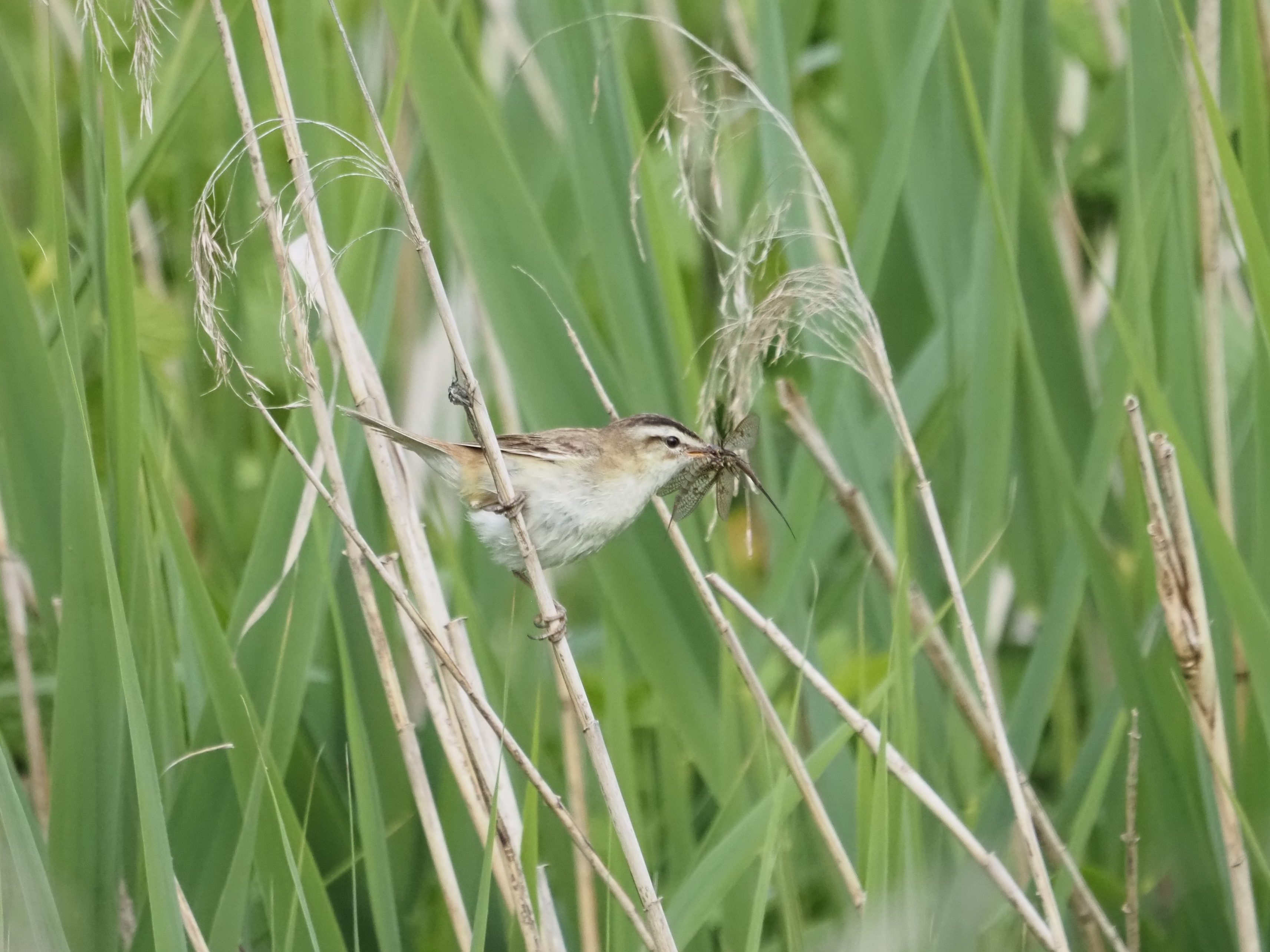
Day 4. Very early start to explore the many meadows around Bialowieza. The main target before having breakfast was to find some of the 500 Eurasian Bisons living in these incredible forests, meaning the main population of this species worldwide.
This time we were very lucky, and soon after leaving the accommodation we were enjoying 3 majestic Bisons: two of them lying on the ground and the third standing up and feeding. To watch in the wild of the most endangered mammals in Europe is always a great experience! The Bisons spent most of the time eating but, as the morning, advanced, they lazily moved into the shade of some large trees, disappearing into the woods.
After breakfast, we went back to the forest, we started looking for some of the specialities that were not yet in our list. A Lesser Spotted Woodpecker flew over the group, partially offering good views to the group. We walked into long into the mature forests, with some stops here and there, until or goal was achieved. A Hazel Grouse came out from the forest, stopping a few metres away from us, up in a tree. Some members of the group had excellent views, but others simply could not locate the bird before it flew down and away from us! We still invested a long time looking & waiting for the bird the show better, but unfortunately this Grouse scaped us..


After this forest short walk we started the transfer to the Biebrza marshes. In our way, we had a mandatory stop to enjoy good views on Ortolan Buntings singing along with Yellowhammers. Around Bialystok we had a new stop, this time to check some fish ponds. Here there are some nesting pairs of Red-necked Grebes, and this time we counted up to 4 pairs of this superb grebes along with Penduline Tit, Great Reed Warbler, Marsh Harriers and a minimum of 2 Little Crakes that kept running and calling in the open reedbeds!
Again was very warm, so after a midday rest, we covered the short distance from our accommodation to the Biebrza marshes. An en route stop here produced more White-winged Black Terns and lovely scope views in the only one Moose of the trip, slowly walking in the marsh before disappearing inside a tall wall of reeds.
To end the day, we visited the famous woodwalk that gives access to some proper Aquatic Warbler habitat. Soon, we heard some of them calling and singing, and the cloudy afternoon provided us with the perfect setting for a good number of excellent views on these extremely scarce passerine, with only about 1000 pairs left in Europe!
We saw them singing but also feeding in the reeds covering the boj, displaying in flight and fighting each other with no mercy to defend their territories against any intruders. Here we also had 2 pairs of Montagu’s Harriers patrolling the open lands, and a good number of displaying Common Snipes, 1 Whinchat and some rather distant Common Redshanks.
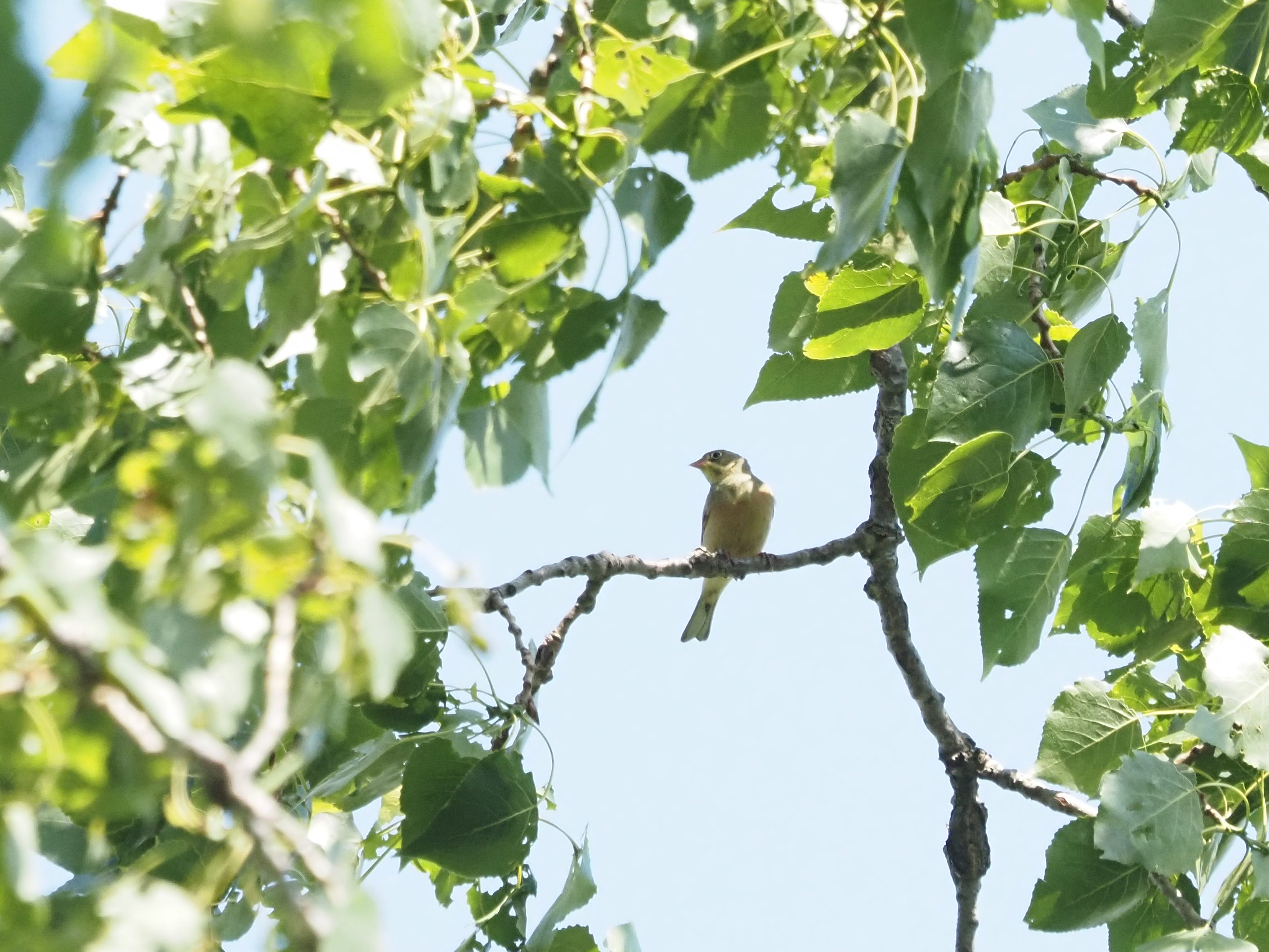



Day 5. During the morning we explored a series of spots to enjoy birds of prey and warblers. Here we saw a minimum of 7 Lesser Spotted Eagles along with Black Storks and Honey Buzzards.
It was again a warm day, and the large fields were fulfilled with dizzing insects and large flocks of Starlings. Some pairs of Common Cranes and Grey Partridges were also seen. A pair of stops produced good views on Thrush Nightingale and some Warblers. Before lunch we tried hard to find Spotted Nutcracker but we didn’t find anything beyond Wood Warblers and Crossbills.



After lunch we scanned the wonderful habitat around Biebrza, where after some scanning we got good views on Citrine Wagtails but also Common Rosefinch, Marsh Harrier and a very elusive Bluethroat.
The last stop of the day was devoted to visit one of the few shallow marshes left in the area, and where a few White-winged Black Terns were feeding along with some Black Terns.

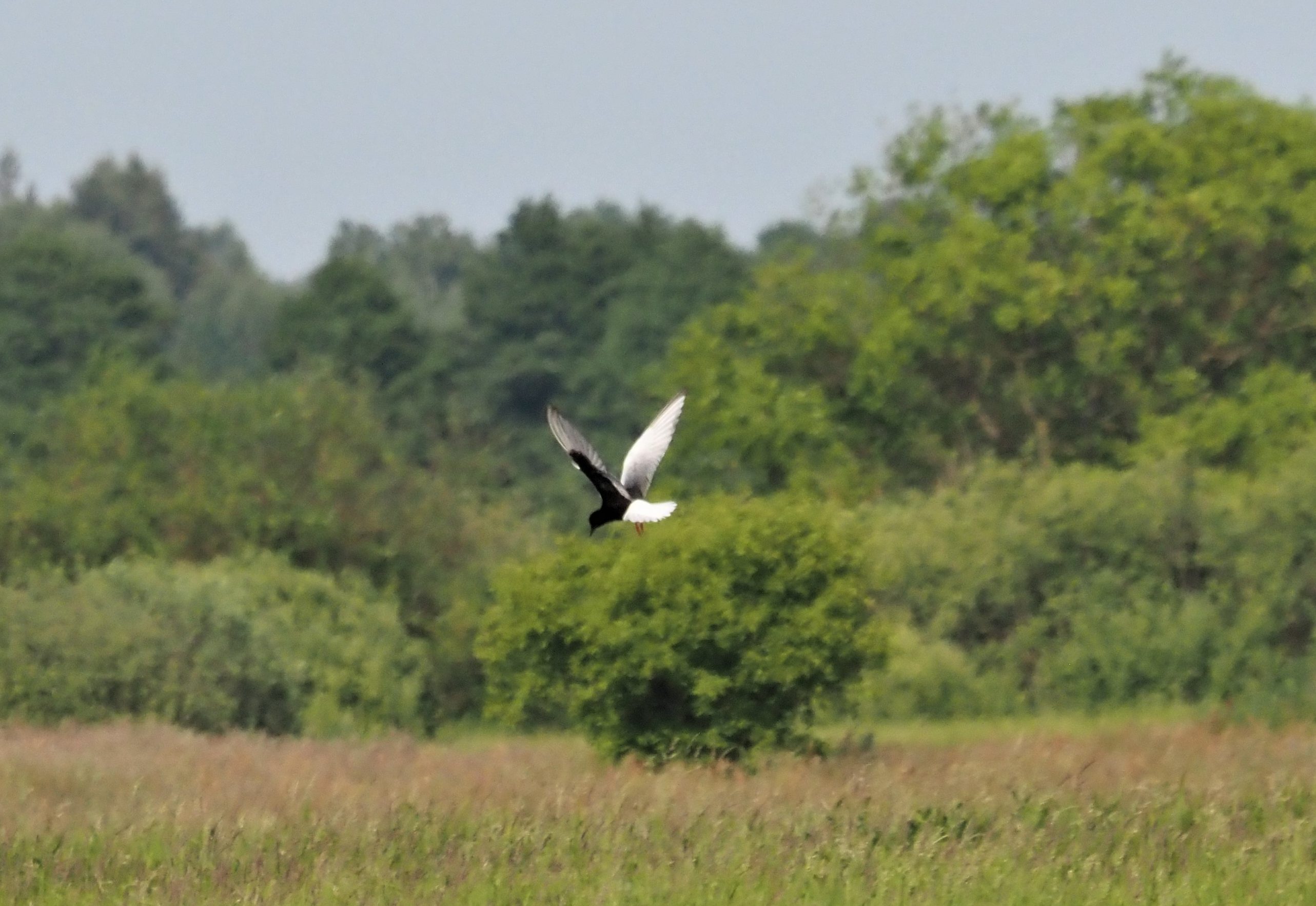
Day 6. Only 90 minutes of birdwatching before transfering back to Warsaw for our flights back home. We did a short walk in a rather random spot around our accommodation combining some marsh and a isolated mature pinewood. Here, we had a Thrush Nightingale by the path but we were distracted by many noisy Thurshes and Jays. Derek had the idea to check in the case an Owl was around, and a few seconds later a Long-eared Owl flew above our heads stopping up in a pine! Very pleased and surprised by this unexpected beauty we checked the marsh with no relevant sights, but back to the woodland we had a Black Woodpecker moving in the trees, and after it flew off we were delighted to find a nest with 2 fledgings Black Woodpeckers sticking out of the nest. Barely 50 metres before, we had a Northern Goshawk flying out of its nest up the trees and this very short walk finished with a pair of Eurasian Hobbies flying low over the woodland. Maybe also nesting there?
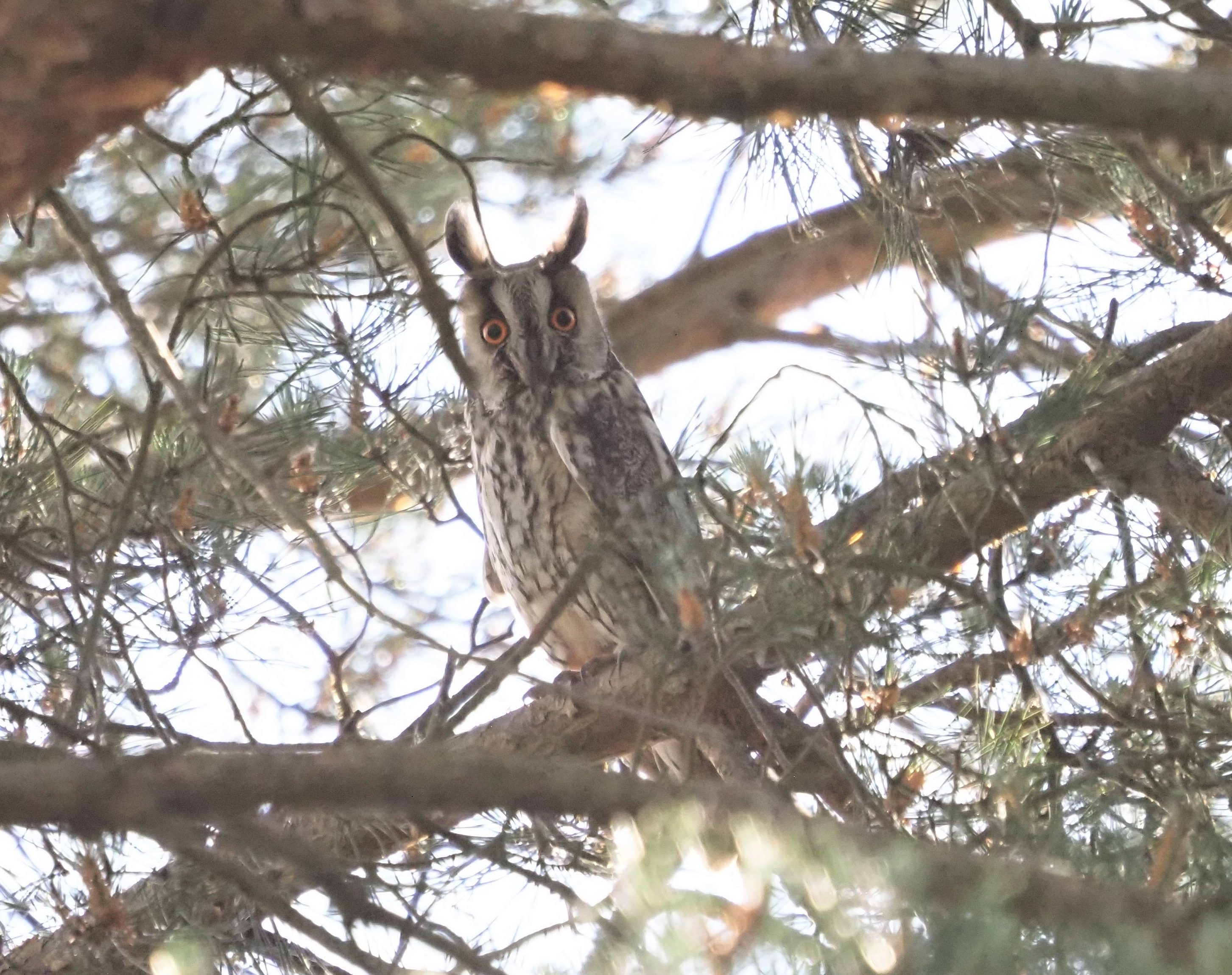

From here we drove back to Warsaw to end a lovely first tour in Poland, and already thinking in coming back and enjoy the awesome birds and mammals living there!
Birds seen during the tour:
- Grey Partridge (Perdix perdix)
- Corncrake (Crex crex) – heard only
- Hazel Grouse (Tetrastes bonasa)
- Whooper Swan (Cygnus cygnus)
- Mute Swan (Cygnus olor)
- Greylag Goose (Anser anser)
- Mallard (Anas platyrhynchos)
- Common Swift (Apus apus)
- Common Cuckoo (Cuculus canorus)
- Feral Pigeon (Columba livia)
- Stock Dove (Columba oenas)
- Common Wood Pigeon (Columba palumbus)
- Eurasian Collared Dove (Streptopelia decaocto)
- Common Crane (Grus grus)
- Water Rail (Rallus aquaticus) – heard only
- Little Crake (Zapornia parva)
- Eurasian Coot (Fulica atra)
- Red-necked Grebe (Podiceps grisegena)
- Northern Lapwing (Vanellus vanellus)
- Eurasian Woodcock (Scolopax rusticola)
- Common Snipe (Gallinago gallinago)
- Great Snipe (Gallinago media) – heard only
- Common Redshank (Tringa totanus)
- Green Sandpiper (Tringa ochropus)
- Black-headed Gull (Chroicocephalus ridibundus)
- Caspian Gull (Larus cachinnans)
- Common Tern (Sterna hirundo)
- Black Tern (Clidonias niger)
- White-winged Black Tern (Chlidonias leucopterus)
- White Stork (Ciconia ciconia)
- Black Stork (Ciconia nigra)
- Greater Bittern (Botaurus stellaris) – heard only
- Grey Heron (Ardea cinerea)
- Great White Egret (Casmerodius albus)
- Red Kite (Milvus milvus)
- Common Buzzard (Buteo buteo)
- European Honey Buzzard (Pernis apivorus)
- Montagu’s Harrier (Circus pygargus)
- Western Marsh Harrier (Circus aeruginosus)
- Lesser Spotted Eagle (Aquila pom
- Northern Goshawk (Accipiter gentilis)
- Eurasian Sparrowhawk (Accipiter nisus)
- White-tailed Eagle (Haliaaetus albicilla)
- Short-eared Owl (Asio flammeus)
- Eurasian Pygmy Owl (Glaucidium passerinum)
- Long-eared Owl (Asio otus)
- Eurasian Hoopoe (Upupa epops)
- Great Spotted Woodpecker (Dendrocopos major)
- White-backed Woodpecker (Dendrocopos leucotos)
- Middle Spotted Woodpecker (Dendrocopos medius)
- Three-toed Woodpecker (Picoides tridactylus)
- Lesser Spotted Woodpecker (Dryobates minor)
- Black Woodpecker (Dryocopus martius)
- European Green Woodpecker (Picus viridis) – heard only
- Common Kestrel (Falco tinnunculus)
- Eurasian Hobby (Falco subbuteo)
- Eurasian Skylark (Alauda arvensis)
- Woodlark (Lullula arborea)
- Sand Martin (Riparia riparia)
- Barn Swallow (Hirundo rustica)
- Western House Martin (Delichon urbicum)
- Tree Pipit (Anthus trivialis)
- Meadow Pipit (Anthus pratensis)
- White Wagtail (Motacilla alba)
- Western Yellow Wagtail (Motacilla flava)
- Citrine Wagtail (Motacilla citreola)
- Eurasian Robin (Erithacus rubecula)
- Thrush Nightingale (Luscinia luscinia)
- Common Redstart (Phoenicurus phoenicurus)
- Black Redstart (Phoenicurus ochruros)
- European Stonechat (Saxicola rubicola)
- Whinchat (Saxicola rubetra)
- Spotted Flycatcher (Muscicapa striata)
- Collared Flycatcher (Ficedula albicollis)
- Red-breasted Flycatcher (Ficedula parva)
- Song Thrush (Turdus philomelos)
- Mistle Thrush (Turdus viscivorus)
- Fieldfare (Turdus pilaris)
- Eurasian Blackbird (Turdus merula)
- Barred Warbler (Curruca nisoria)
- Common Whitethroat (Curruca communis)
- Lesser Whitethroat (Curruca curruca)
- Garden Warbler (Sylvia borin)
- Eurasian Blackcap (Sylvia atricapilla)
- Sedge Warbler (Acrocephalus schoenobaenus)
- Aquatic Warbler (Acrocephalus paludicola)
- Common Reed Warbler (Acrocephalus scirpaceus)
- Marsh Warbler (Acrocephalus palustris)
- Great Reed Warbler (Acrocephalus arundinaceus)
- Common Grasshopper Warbler (Locustella naevia)
- Savi’s Warbler (Locustella luscinioides)
- River Warbler (Locustella fluviatilis)
- Icterine Warbler (Hippolais icterina)
- Goldcrest (Regulus regulus)
- Common Chiffchaff (Phylloscopus collybita)
- Willow Warbler (Phylloscopus trochilus)
- Wood Warbler (Phylloscopus sibilatrix)
- Eurasian Wren (Troglodytes troglodytes)
- Red-backed Shrike (Lanius collurio)
- Great Grey Shrike (Lanius excubitor)
- European Starling (Sturnus vulgaris)
- Eurasian Jay (Garrulus glandarius)
- Eurasian Magpie (Pica pica)
- Western Jackdaw (Corvus monedula)
- Hooded Crow (Corvus corone)
- Rook (Corvus frugilegus)
- Common Raven (Corvus corax)
- Eurasian Golden Oriole (Oriolus oriolus)
- Eurasian Treecreeper (Certhia brachydactyla)
- Eurasian Nuthatch (Sitta europaeus)
- House Sparrow (Passer domesticus)
- Eurasian Tree Sparrow (Passer montanus)
- Marsh Tit (Poecile palustris)
- Willow Tit (Poecile montanus)
- Coal Tit (Periparus ater)
- European Crested Tit (Lophophanes cristatus)
- Blue Tit (Cyanistes caeruleus)
- Great Tit (Parus major)
- Long-tailed Tit (Aegithalos caudatus)
- Western Penduline Tit (Remiz pendulinus)
- European Serin (Serinus serinus)
- Common Rosefinch (Carpoduca erithrinus)
- Eurasian Goldfinch (Carduelis carduelis)
- Eurasian Greenfinch (Chloris chloris)
- Eurasian Siskin (Spinus spinus)
- Common Linnet (Linaria cannabina)
- Common Chaffinch (Fringilla coelebs)
- Common Crossbill (Loxia curvirostra)
- Yellowhammer (Emberiza citrinella)
- Common Reed Bunting (Emberiza schoeniclus)
- Ortolan Bunting (Emberiza hortulana)
List of mammals during the tour
- European Hare (Leppus leppus)
- European Hedgerog (Erinaceus europaeus)
- Roe Deer (Capreolus capreolus)
- Eurasian Bison (Bison bison)
Please check our tours at www.barcelonabirdingpoint.com

